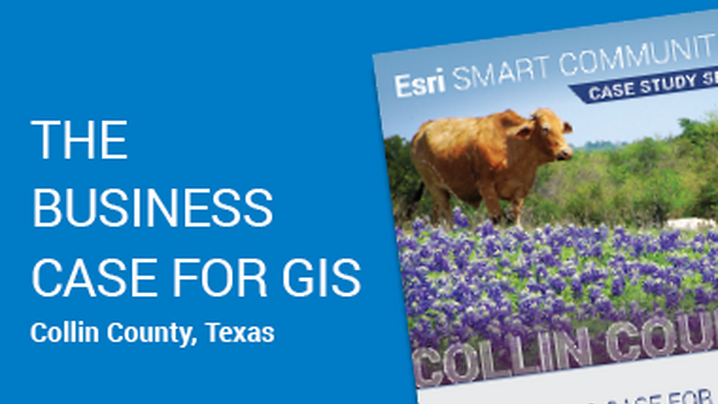
Collin County, an area just northeast of Dallas, Texas (population 914,127) has been shaping itself into a Smart Community for about 25 years now. In 1991 the county realized that in order to comply with public safety standards, a new street address system would need to be deployed. This led to the procurement of a GIS system along with the creation of a team to help develop and manage this new technology.
Today the Collin County system tracks and reports on such city data as annexations, population, road mileage, and fire districts, all in one interactive map. The system also provides the county with exponential data. This latest edition of Esri Smart Communities Case Study Series explores other ways the county has benefited from use of GIS technology.
1. Convenience
In 2009 Texas allowed local governments to establish voting centers throughout their jurisdictions, which enabled voters to choose their polling locations. Collin County realized that this could end up creating long lines that in turn could discourage people from voting. In an attempt to make the voting process as efficient as possible, the county developed the Voter Line Wait mobile app. The app lets voters see the nearest voting polls and which polls have shorter wait times.
2. Revenue Generation
Collin County has been able to use its GIS technology to help other local governments while simultaneously receiving a return on investment. For example, Collin County has contracted with Wylie, Texas, to analyze the city’s emergency service and response districts in order to provide the city with digitized maps for police and fire departments.
3. Cost Savings
Collin County has the most toll road miles in the Dallas-Fort Worth area, and officials are using GIS technology to explore alternative methods of funding new highway projects, with the goal of making busy regional highways toll free. The county hopes to fund improvements through implementation of new sales tax revenues within the highway corridor.
4. Cost Avoidance
Collin County is able to avoid costs in a number of ways with their GIS technology. For instance, prior to 2001 the county’s district attorney’s office used an outside contractor to produce maps in order to track jury verdicts. In 2001 the office began using internal data provided through the GIS team. According to Collin County’s senior GIS applications manager, the county has “been able to keep our maintenance costs low and can support many people with few GIS staff.”
This blog post was developed from a case study by Cory Fleming, Senior Technical Specialist, ICMA, with assistance by ICMA Strategic Partner Esri. Download this FREE case study to learn more about how Collin County is making Business Case for GIS.
New, Reduced Membership Dues
A new, reduced dues rate is available for CAOs/ACAOs, along with additional discounts for those in smaller communities, has been implemented. Learn more and be sure to join or renew today!
